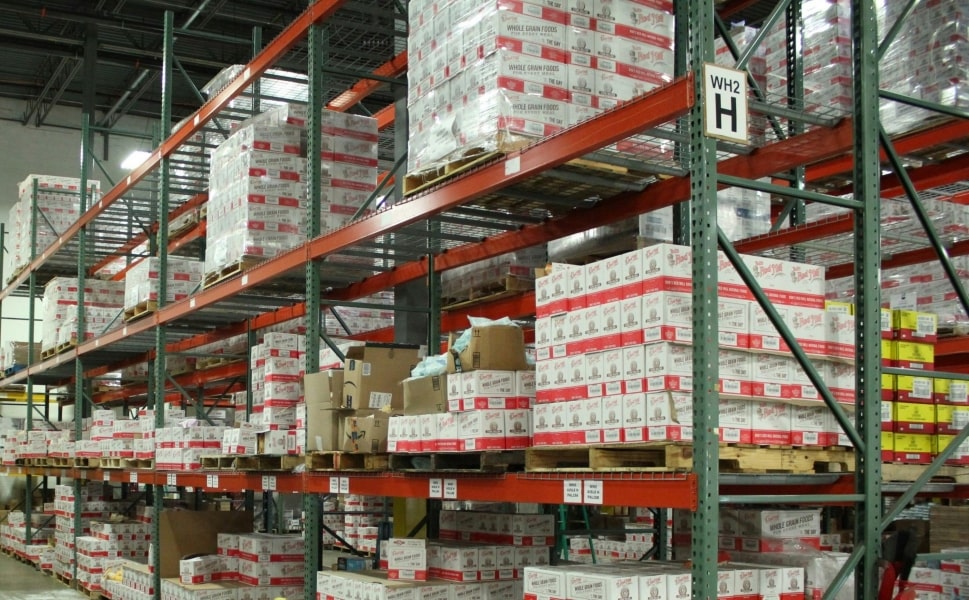5 E-commerce fulfillment strategies for 2025
Written by
Editorial TeamPublished on
Explore 5 essential ecommerce fulfillment strategies for 2025, including same-day delivery, automation, sustainable practices, omnichannel integration, and global logistics. Stay ahead of customer expectations and improve operational efficiency with these key trends. (Ad)

Commercial collaboration
(Image Source: www.unsplash.com)
E-commerce fulfillment is at the core of any successful online retail operation, as it directly impacts customer satisfaction and operational efficiency. With rapid technological advancements, consumer expectations are rising, and new trends are emerging. In 2025, businesses must adapt to these changes by adopting modern fulfillment strategies to stay competitive. Here’s a detailed guide on 5 key e-commerce fulfillment strategies for 2025.
Same-day delivery and hyperlocal fulfillment
As consumers demand faster delivery times, same-day delivery has become the gold standard in e-commerce fulfillment. In 2025, businesses will need to leverage hyperlocal fulfillment to meet this expectation. This approach involves fulfilling orders from warehouses or retail locations that are located near the customer’s delivery address, ensuring faster shipping.
Why it matters: Offering same-day delivery can significantly enhance customer satisfaction and increase conversion rates. This strategy not only meets the rising demand for speed but also helps businesses differentiate themselves from competitors.
How to implement: To achieve this, e-commerce businesses should invest in localized warehouses or partner with third-party logistics (3PL) providers that offer hyperlocal fulfillment networks. Leveraging technologies like real-time inventory management systems and integrating them with delivery management platforms will enable businesses to fulfill orders quickly and efficiently.
Automation and AI-powered fulfillment systems
By 2025, automation will be at the heart of e-commerce fulfillment operations. AI-powered fulfillment systems, including robotic process automation (RPA), will help streamline inventory management, order processing, and shipping.
Why it matters: Automation reduces human error, increases order accuracy, and speeds up the fulfillment process. It also frees up valuable time and resources, allowing businesses to scale without compromising service quality.
How to implement: Investing in automated warehouses equipped with AI-powered robots or smart conveyors can help businesses optimize order picking and packing processes. AI can also help in demand forecasting, ensuring that inventory levels are always optimized for efficient fulfillment. Additionally, AI-powered chatbots can handle customer service inquiries regarding shipping and tracking in real time.
Sustainable fulfillment practices
With an increasing number of consumers prioritizing sustainability, businesses must adopt greener fulfillment practices. In 2025, eco-friendly packaging, carbon-neutral shipping options, and ethical sourcing will be expected by a growing segment of environmentally-conscious customers.
Why it matters: Sustainable fulfillment practices help businesses reduce their environmental impact, improve brand image, and appeal to the eco-conscious consumer. Studies show that consumers are more likely to buy from brands that align with their values, including sustainability.
How to implement: Brands can switch to recyclable, biodegradable, or reusable packaging materials to minimize waste. Offering carbon-neutral shipping options is another way to reduce the carbon footprint of the fulfillment process. Collaborating with carriers that prioritize sustainability and investing in energy-efficient fulfillment centers will further strengthen the business’s eco-friendly credentials.
Omnichannel fulfillment strategy
In 2025, the lines between online and offline shopping will continue to blur. Customers will expect to shop seamlessly across different platforms, and businesses need an omnichannel fulfillment strategy to meet these expectations. An omnichannel approach allows businesses to fulfill orders from both online channels and physical stores.
Why it matters: An omnichannel fulfillment strategy offers flexibility and convenience to customers while optimizing inventory management and fulfillment efficiency. It ensures that businesses can quickly fulfill orders, regardless of whether they are placed online or in-store.
How to implement: Integrating your e-commerce platform with in-store inventory systems is essential for omnichannel fulfillment. Implementing “buy online, pick up in store” (BOPIS) and “buy online, return in store” (BORIS) options can provide customers with more fulfillment choices. Additionally, businesses should leverage real-time data and predictive analytics to ensure they have the right stock levels in both physical and online stores.
International fulfillment and cross-border logistics
As e-commerce expands globally, businesses must be prepared to handle international fulfillment and cross-border logistics. In 2025, expanding into new markets will require efficient and cost-effective shipping solutions to ensure timely delivery and avoid costly customs issues. For businesses looking to streamline their operations, outsourcing e-commerce fulfillment can be a strategic option to ensure scalability and efficiency.
Why it matters: Global e-commerce growth has led to more customers expecting international shipping options. Businesses that can offer quick and reliable cross-border delivery will have a competitive advantage, while those that fail to do so may lose customers to global competitors.
How to implement: Partnering with international 3PL providers that have a strong presence in the target markets will help businesses navigate local customs and taxes. Offering multiple international shipping options (e.g., economy, express) and transparent tracking information will improve the customer experience. Businesses should also localize their shipping policies and provide international returns management solutions.
Conclusion
The e-commerce fulfillment landscape in 2025 will be defined by speed, automation, sustainability, omnichannel integration, and global expansion. By adopting these five fulfillment strategies, businesses can stay ahead of the curve, meet customer expectations, and streamline their operations for greater efficiency. Implementing the right technologies and fulfilling the demand for faster, greener, and more personalized delivery will be crucial for e-commerce success in 2025.
***


